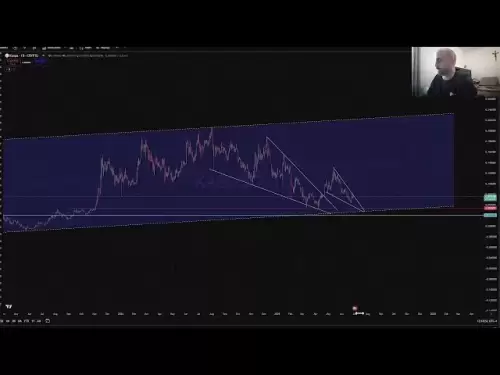-
 Bitcoin
Bitcoin $107,341.7259
0.15% -
 Ethereum
Ethereum $2,438.6204
0.70% -
 Tether USDt
Tether USDt $1.0003
-0.02% -
 XRP
XRP $2.1866
1.94% -
 BNB
BNB $649.0952
0.36% -
 Solana
Solana $150.9602
5.63% -
 USDC
USDC $0.9999
0.00% -
 TRON
TRON $0.2742
0.40% -
 Dogecoin
Dogecoin $0.1645
1.93% -
 Cardano
Cardano $0.5669
1.18% -
 Hyperliquid
Hyperliquid $37.8286
4.19% -
 Bitcoin Cash
Bitcoin Cash $491.4669
-2.74% -
 Sui
Sui $2.8150
3.06% -
 Chainlink
Chainlink $13.4184
2.91% -
 UNUS SED LEO
UNUS SED LEO $9.0809
0.27% -
 Avalanche
Avalanche $18.0295
2.60% -
 Stellar
Stellar $0.2396
1.19% -
 Toncoin
Toncoin $2.8587
0.13% -
 Shiba Inu
Shiba Inu $0.0...01160
2.59% -
 Litecoin
Litecoin $86.4192
1.45% -
 Hedera
Hedera $0.1486
1.19% -
 Monero
Monero $308.4324
0.87% -
 Polkadot
Polkadot $3.4202
1.43% -
 Bitget Token
Bitget Token $4.6436
-0.34% -
 Dai
Dai $0.9998
-0.02% -
 Ethena USDe
Ethena USDe $1.0002
0.00% -
 Uniswap
Uniswap $7.1527
3.29% -
 Pi
Pi $0.5357
-8.45% -
 Pepe
Pepe $0.0...09588
4.61% -
 Aave
Aave $259.9759
0.81%
How do domestic users participate in staking on OKX?
OKX offers flexible and locked staking options for domestic users, but be aware of country-specific regulations and prioritize security before investing.
Apr 02, 2025 at 07:00 am

Understanding OKX Staking for Domestic Users
OKX, a prominent cryptocurrency exchange, offers various staking options. However, participation for domestic users (depending on your country of residence) might be subject to specific regulations and limitations. It's crucial to understand these before engaging in any staking activities. This article will detail the process and address potential concerns. Remember, always prioritize security and conduct thorough research before investing in any cryptocurrency venture.
Navigating the OKX Platform for Staking
To begin staking on OKX, you first need an account. If you don't have one, register on the OKX website. Ensure you provide accurate and verifiable information during registration. Once logged in, navigate to the "Finance" or "Earn" section (the exact location may vary slightly depending on the platform update). You'll find various staking options listed there, categorized by cryptocurrency and staking type.
Choosing a Staking Option on OKX
OKX offers a range of staking options, each with varying risks and rewards. These include flexible staking, locked staking, and potentially other specialized programs.
- Flexible Staking: This allows you to withdraw your staked assets at any time without penalties. However, the rewards are generally lower compared to locked staking.
- Locked Staking: This requires you to lock your assets for a specific duration. You'll earn higher rewards, but you won't be able to access your funds until the lock-up period ends. Consider the lock-up period carefully.
- Other Programs: OKX may offer unique staking programs, such as those involving specific projects or DeFi protocols. These often have higher rewards but might also carry greater risk. Carefully read the terms and conditions before participating.
Step-by-Step Guide to Staking on OKX
Let's assume you've chosen a suitable staking option. The following steps will guide you through the process:
- Select your cryptocurrency: Choose the cryptocurrency you wish to stake from the available options.
- Choose your staking plan: Select either flexible or locked staking, depending on your risk tolerance and financial goals.
- Input the amount: Enter the amount of cryptocurrency you want to stake. Ensure you have sufficient funds in your OKX account.
- Review and confirm: Double-check all details before confirming the staking process. This is crucial to avoid errors.
- Monitor your rewards: After confirming, monitor your staking progress and accumulated rewards through your OKX account.
Understanding Risks and Rewards
Staking, while potentially lucrative, carries inherent risks. The value of your staked cryptocurrency can fluctuate, impacting your overall returns. Additionally, the platform itself carries a level of risk. Always research the platform's security measures and reputation before entrusting your funds. Diversification is crucial. Don't stake all your assets in one place or one cryptocurrency.
Regulatory Considerations for Domestic Users
Regulations surrounding cryptocurrency vary significantly across countries. Before participating in staking, thoroughly investigate the legal framework in your jurisdiction. Some countries may have strict regulations or outright bans on cryptocurrency activities. Non-compliance can lead to severe legal consequences. Always prioritize compliance with local laws.
Security Best Practices for OKX Staking
Security should be your top priority when staking on any platform, including OKX.
- Strong Password: Use a strong, unique password for your OKX account. Avoid using the same password for other online accounts.
- Two-Factor Authentication (2FA): Enable 2FA for an extra layer of security. This adds an additional verification step, making it harder for unauthorized individuals to access your account.
- Regular Security Audits: Stay updated on OKX's security measures and any reported vulnerabilities. Regularly review your account activity for any suspicious transactions.
- Secure Device: Use a secure device to access your OKX account, avoiding public Wi-Fi networks or potentially compromised computers.
Understanding the Rewards System
The rewards you earn from staking depend on several factors, including:
- The cryptocurrency: Different cryptocurrencies offer different staking rewards. Some offer higher APYs (Annual Percentage Yields) than others.
- The staking plan: Locked staking generally provides higher rewards than flexible staking.
- The network conditions: Network congestion and other factors can influence the rewards you receive.
Withdrawing Your Staked Assets and Rewards
Withdrawing your staked assets and rewards depends on the chosen staking plan. With flexible staking, you can usually withdraw at any time. However, with locked staking, you must wait until the lock-up period expires before withdrawing. The process is usually straightforward through the OKX platform. Follow the on-screen instructions carefully.
Frequently Asked Questions
Q: Is staking on OKX safe?
A: While OKX employs security measures, no platform is entirely risk-free. Cryptocurrency investments, including staking, involve inherent risks. Thorough research and understanding of those risks are crucial.
Q: What are the fees associated with staking on OKX?
A: OKX may charge fees for staking, depending on the specific plan. These fees might be deducted from your rewards. Check the terms and conditions of your chosen staking plan for detailed fee information.
Q: What happens if OKX experiences a security breach?
A: The impact of a security breach on your staked assets would depend on the nature and extent of the breach. OKX's insurance and security policies would come into play. However, it highlights the importance of diversifying your assets and not keeping all your crypto in one place.
Q: Can I stake multiple cryptocurrencies simultaneously on OKX?
A: Yes, OKX generally allows you to stake multiple cryptocurrencies concurrently, providing you have sufficient funds for each staking plan.
Q: Are there any minimum amounts required for staking on OKX?
A: Yes, there are usually minimum amounts required for each staking plan. These minimums vary depending on the cryptocurrency and staking type. Check the specific requirements before attempting to stake.
Q: What happens if I miss the unlock period for locked staking?
A: You will typically be able to withdraw your assets once the lock-up period ends. Missing the unlock period usually doesn't result in asset loss, but it might affect the overall rewards you earn. Always pay attention to lock-up periods.
Disclaimer:info@kdj.com
The information provided is not trading advice. kdj.com does not assume any responsibility for any investments made based on the information provided in this article. Cryptocurrencies are highly volatile and it is highly recommended that you invest with caution after thorough research!
If you believe that the content used on this website infringes your copyright, please contact us immediately (info@kdj.com) and we will delete it promptly.
- Trump, Bitcoin, and Peter Schiff: A New York Minute on Crypto Chaos
- 2025-06-29 12:30:12
- BTC Price, BlackRock ETF, Fed Signals: Decoding the Crypto Crossroads
- 2025-06-29 12:30:12
- SEI Price Skyrockets Amid ETF Hype and Bullish Uptrend: What's Next?
- 2025-06-29 12:50:11
- Bitcoin Mining, Cryptocurrency, and Blockchain: A New York State of Mind
- 2025-06-29 13:10:11
- Dogecoin's Double Bottom: Is an Explosive Move Imminent?
- 2025-06-29 12:55:11
- Kitten Craze Online: Hunting for the Purr-fect Coin Purse
- 2025-06-29 10:30:12
Related knowledge
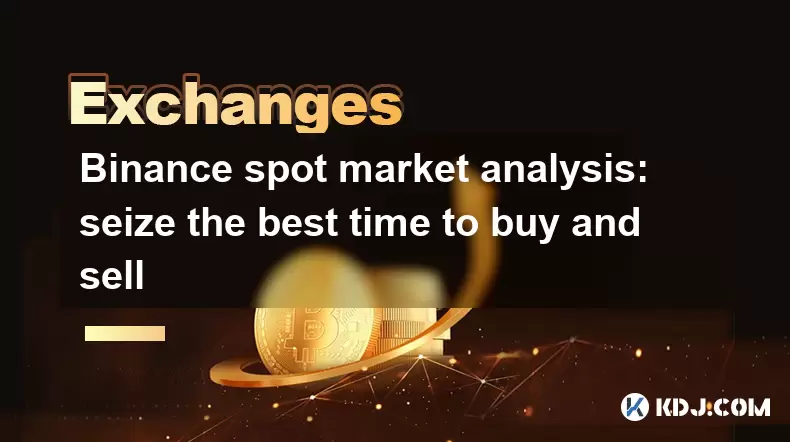
Binance spot market analysis: seize the best time to buy and sell
Jun 19,2025 at 04:56pm
Understanding the Binance Spot MarketThe Binance spot market is one of the most popular platforms for cryptocurrency trading globally. It allows users to trade digital assets at current market prices, making it essential for traders aiming to buy low and sell high. Unlike futures or margin trading, spot trading involves direct ownership of the asset aft...
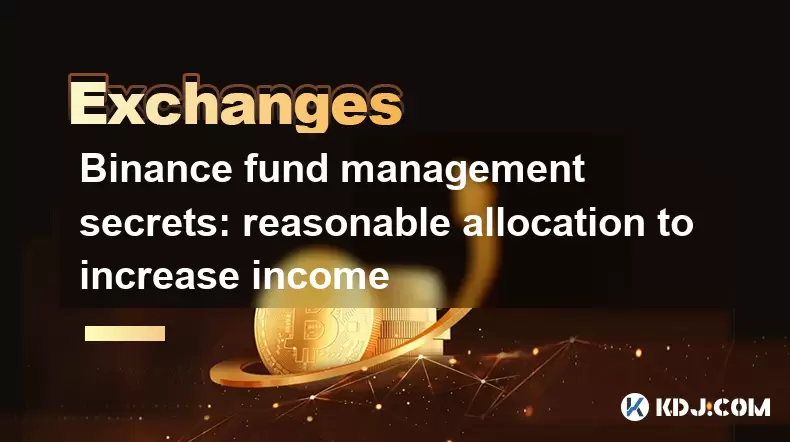
Binance fund management secrets: reasonable allocation to increase income
Jun 22,2025 at 02:29pm
Understanding Binance Fund ManagementBinance fund management involves strategic allocation of your cryptocurrency assets to optimize returns while managing risk. The key to successful fund management lies in understanding how different investment options on the Binance platform can be utilized to create a diversified portfolio. This includes spot tradin...
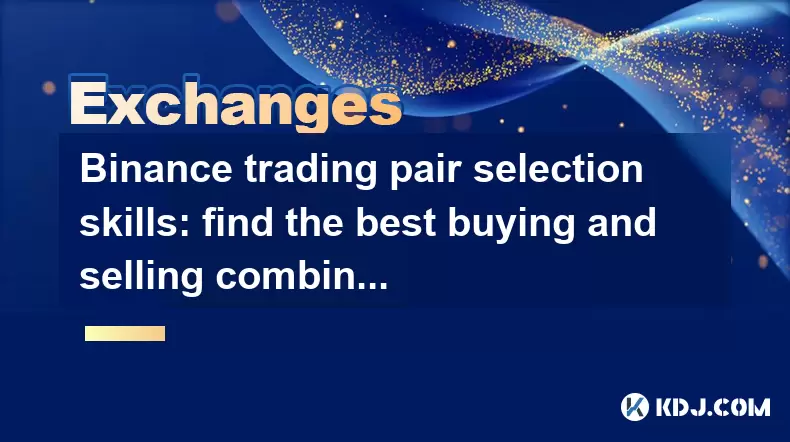
Binance trading pair selection skills: find the best buying and selling combination
Jun 23,2025 at 02:49am
Understanding the Basics of Trading Pairs on BinanceBefore diving into trading pair selection skills, it's essential to understand what a trading pair is. On Binance, a trading pair refers to two cryptocurrencies that can be traded against each other. For example, BTC/USDT means Bitcoin is being traded against Tether. Each trading pair has its own liqui...
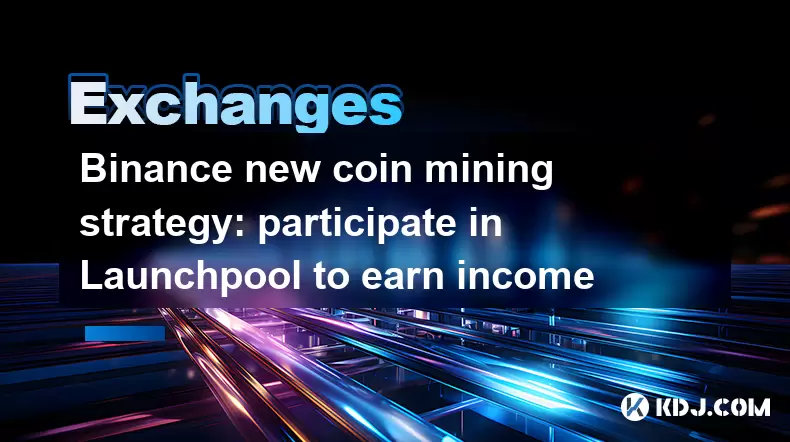
Binance new coin mining strategy: participate in Launchpool to earn income
Jun 23,2025 at 11:56am
What is Binance Launchpool and how does it work?Binance Launchpool is a feature introduced by the world’s largest cryptocurrency exchange, Binance, to allow users to earn new tokens through staking. This platform enables users to stake their existing cryptocurrencies (such as BNB, BUSD, or other supported assets) in exchange for newly launched tokens. T...
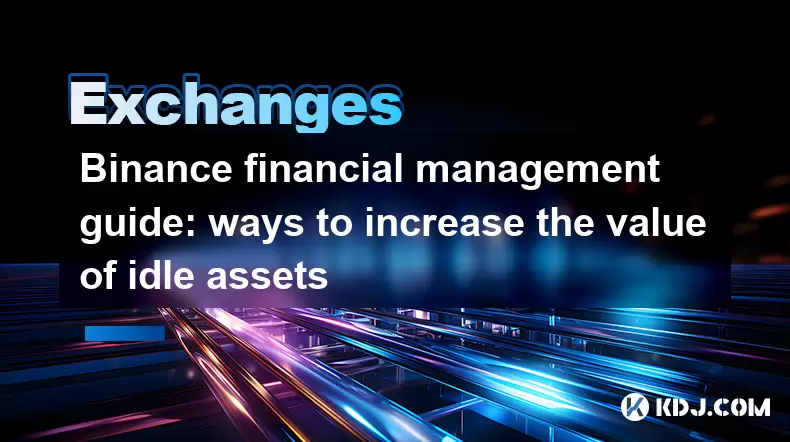
Binance financial management guide: ways to increase the value of idle assets
Jun 19,2025 at 11:22pm
Understanding Idle Assets in the Cryptocurrency SpaceIn the fast-paced world of cryptocurrency, idle assets refer to digital currencies that are not actively being used for trading, staking, or yield farming. Holding these funds in a wallet without utilizing them means missing out on potential growth opportunities. Binance, as one of the leading platfor...
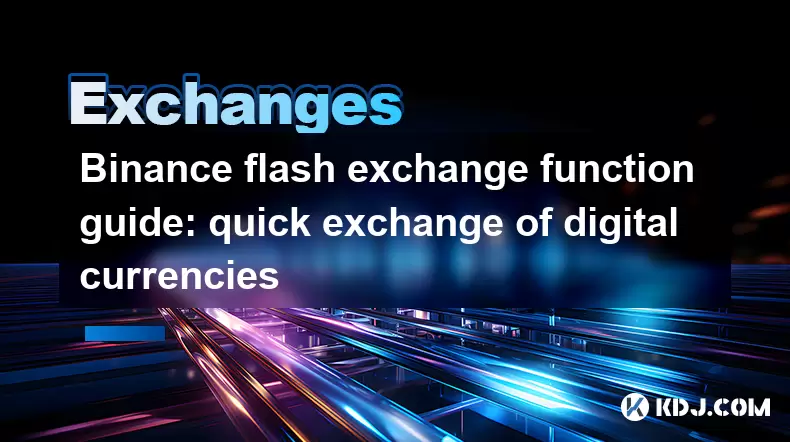
Binance flash exchange function guide: quick exchange of digital currencies
Jun 23,2025 at 12:29pm
What is the Binance Flash Exchange Function?The Binance Flash Exchange function is a powerful tool designed to allow users to instantly swap between supported cryptocurrencies without the need for placing traditional buy/sell orders. This feature simplifies the trading process by offering a direct exchange mechanism, eliminating the requirement to conve...

Binance spot market analysis: seize the best time to buy and sell
Jun 19,2025 at 04:56pm
Understanding the Binance Spot MarketThe Binance spot market is one of the most popular platforms for cryptocurrency trading globally. It allows users to trade digital assets at current market prices, making it essential for traders aiming to buy low and sell high. Unlike futures or margin trading, spot trading involves direct ownership of the asset aft...

Binance fund management secrets: reasonable allocation to increase income
Jun 22,2025 at 02:29pm
Understanding Binance Fund ManagementBinance fund management involves strategic allocation of your cryptocurrency assets to optimize returns while managing risk. The key to successful fund management lies in understanding how different investment options on the Binance platform can be utilized to create a diversified portfolio. This includes spot tradin...

Binance trading pair selection skills: find the best buying and selling combination
Jun 23,2025 at 02:49am
Understanding the Basics of Trading Pairs on BinanceBefore diving into trading pair selection skills, it's essential to understand what a trading pair is. On Binance, a trading pair refers to two cryptocurrencies that can be traded against each other. For example, BTC/USDT means Bitcoin is being traded against Tether. Each trading pair has its own liqui...

Binance new coin mining strategy: participate in Launchpool to earn income
Jun 23,2025 at 11:56am
What is Binance Launchpool and how does it work?Binance Launchpool is a feature introduced by the world’s largest cryptocurrency exchange, Binance, to allow users to earn new tokens through staking. This platform enables users to stake their existing cryptocurrencies (such as BNB, BUSD, or other supported assets) in exchange for newly launched tokens. T...

Binance financial management guide: ways to increase the value of idle assets
Jun 19,2025 at 11:22pm
Understanding Idle Assets in the Cryptocurrency SpaceIn the fast-paced world of cryptocurrency, idle assets refer to digital currencies that are not actively being used for trading, staking, or yield farming. Holding these funds in a wallet without utilizing them means missing out on potential growth opportunities. Binance, as one of the leading platfor...

Binance flash exchange function guide: quick exchange of digital currencies
Jun 23,2025 at 12:29pm
What is the Binance Flash Exchange Function?The Binance Flash Exchange function is a powerful tool designed to allow users to instantly swap between supported cryptocurrencies without the need for placing traditional buy/sell orders. This feature simplifies the trading process by offering a direct exchange mechanism, eliminating the requirement to conve...
See all articles























